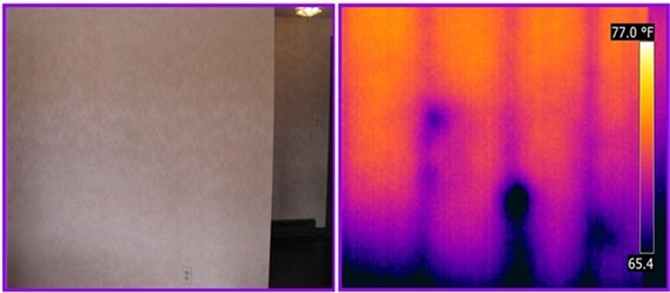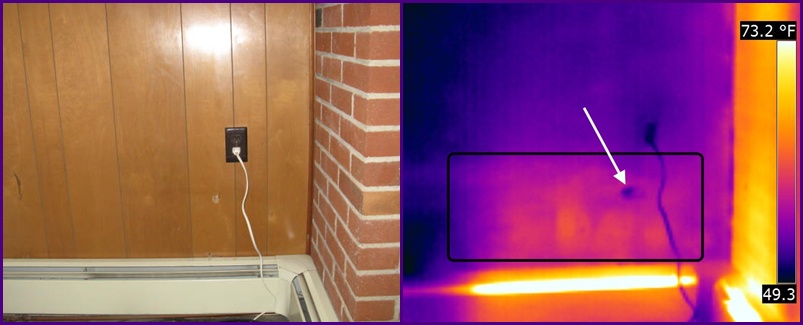Wood Boring Insects
See What's Really Going On!
One very important finding with thermal imaging in Massachusetts would be wood boring insect infestations. It’s crucial in locating any hidden Termite or Carpenter Ant damage much sooner than later. Colonies can become so catastrophic and cause expensive structural damage to your home without you even knowing it. A small termite colony can form and cause extensive damage to a building in as little as six weeks, so vigilance plays an important role in preventing these types of infestations.
In the past I have located concealed wood boring insect damage in homes but the proper conditions must be met. When termites or carpenter ants do invade buildings, the normal heat patterns of concealed structural members (inside walls and floors) are changed due to the structure being damaged or hollowed out. The damaged wood members will emit a slightly different temperature than the solid wood members. This slight difference in temperature is quite obvious and visible to the trained eye with a thermal imaging camera.
| IMPORTANT: In order for thermal imaging to be effective and detect for concealed termite damage within your structure, the wall in question must be above grading and exposed to the weather. (Basement walls can not be thermally scanned because it is below grading) and must contain a wall cavity that is exposed to a temperature differential on the oppsite side of the wall being thermally scanned. See image below... |

My thermal imaging camera records this change in heat patterns and will indicate the exact location of the Wood Boring Insect infestation (See images below). The color image will show hot spots as red or yellow and cold spots as blue or purple and these heat patterns can indicate wood boring Insect infestations if interpreted correctly. My infrared technology allows for early detection of a termite problem, and eradication could proceed before the damage is too great, thus saving the owner thousands of dollars in repairs at some future date.

Visually, this wall looks great, but infrared detects termite activity.

Existing homeowners can also use my thermal imaging services so that they are not over-charged by exterminators who do not accurately identify the Termite or Carpenter Ant problems for subsequent treatment. There are instances where the concealed wood boring insect damage is minor but the exterminator is telling you the opposite or is simply guessing. Infrared imaging can verify the extent of the insect damage.
You may be wondering, “How can a camera detect concealed termite colonies”? Well, let's take Termites for example. When termites do invade buildings, their presence alters the normal heat patterns of the floors and walls. Termites are cold-blooded creatures, but their metabolic processes will produce heat. Termites also work to control their thermal environment by building moist mud tunnels, which appear as cool spots in the wall cavities. These cool spots and any structural damage are quite visible during a typical thermal scan. Thermal imaging is an environmentally friendly, limited chemical and radiation option. Using very specific information about the pests’ location, I am able to determine the most effective location for placing the fumigation chemicals. This protects the homeowner and the environment. After the initial fumigation is completed, thermal imaging can be used again to follow-up on eradication efforts, and help to ensure that termite infestation is nothing but a bad memory.
My inspection results will be captured and then documented into a professional report, providing you with tangible proof of all my wood boring insect findings.

A visual inspection of this wall looks great, but after thermally scanning this area, infrared detected several anomalies (inside black border). Upon a closer examination, I rubbed the paneling and my finger poked right through it (white arrow). This revealed concealed Termite activity throughout the paneling and wall structure.
